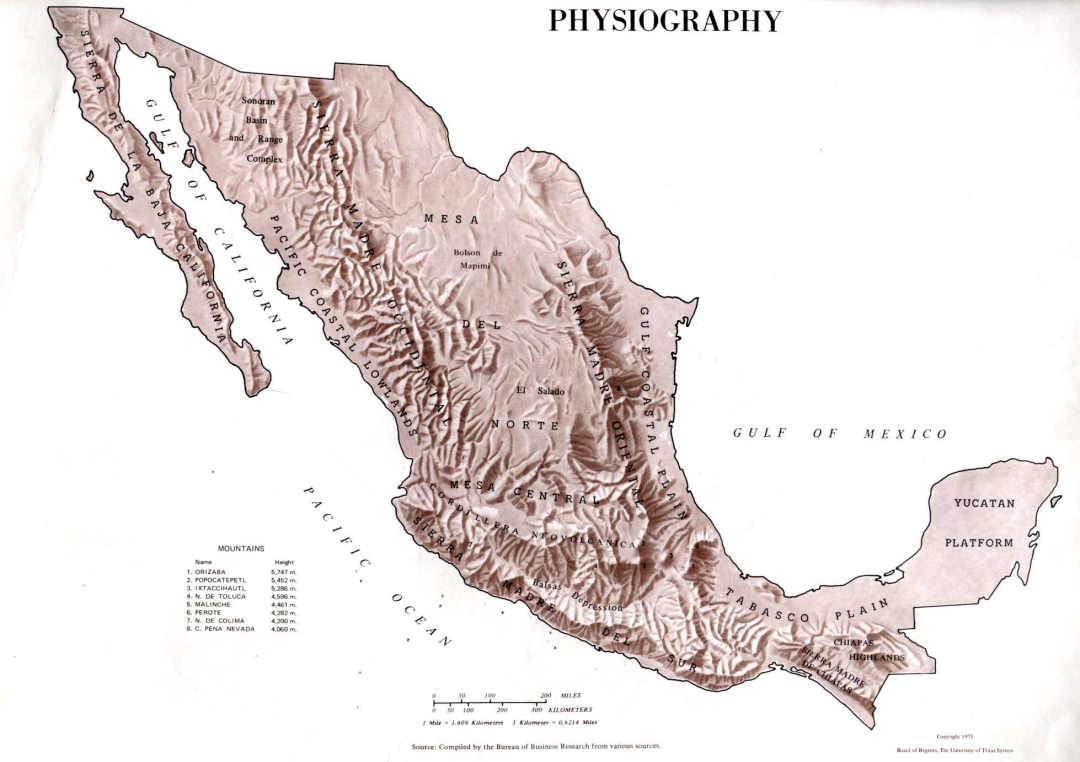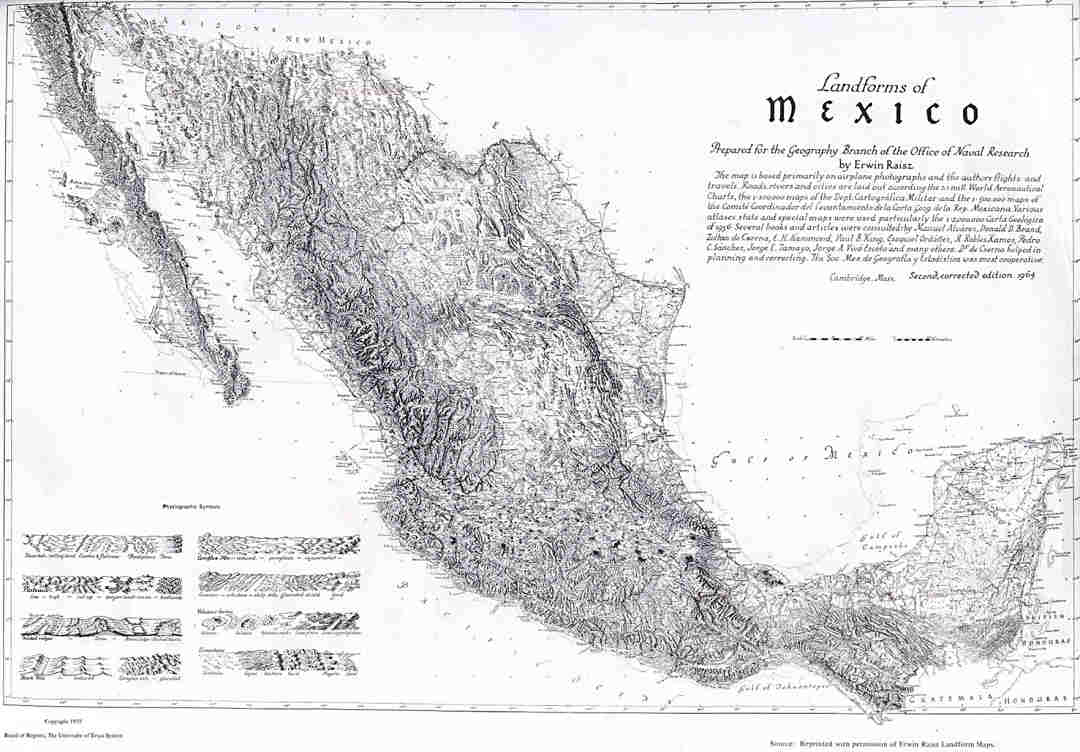
The USGS has an excellent map of the physiographic regions of the United States. As can be seen, the northern part of the Chihuahuan Desert falls within the Mexican Highlands subdivision of the Basin and Range Province, with the eastern edge marginally within the Great Plains Province. In general, the province consists of fault-block mountains trending more or less north or a bit west of north separated from one another by flat-bottomed basins. Most basins have only internal drainage under the current climatic regime. The USGS site gives more information of interest to us (numbers 22 and 28).
The Mexican Highland Province continues south of the border, with the desert falling almost entirely within it and the more southerly Central Mesa. Below is a map of Mexico showing the highlands lying between mountains to the west and east, and the landforms map below it shows the complex nature of the region.

Physiographic map of Mexico showing the overall major physiographic features. Map courtesy of the University of Texas Libraries, The University of Texas at Austin.

Map showing the landforms of Mexico in finer detail. Courtesy of the University of Texas Libraries, The University of Texas at Austin.

Mountains toward the western edge of the desert tend to be igneous, while those closer to the Rio Grande often are limestones and other sedimentary rocks. Many of the closed basins held lakes during the Pleistocene ice ages (ending roughly 10 thousand years ago) when temperatures were cooler and effective moisture greater. Many still hold water temporarily in so-called playas. Dissolved material precipitated as water evaporated has left many of these old lake beds and playas with heavy deposits of salts and other minerals. The pure white sands of White Sands National Monument consist mostly of gypsum dissolved from the San Andres Mountains to the west and precipitated out in lake waters between the mountains and the current sand deposits; weathering and the wind have done the rest.
White Sands. Note the pedestal beneath the plant in the foreground left. Once established, the plant roots help stabilize the sands, but sand outside of the root zone is free to migrate away in the wind. Photograph by A.H. Harris.
Last Update: 24 Jun 2006